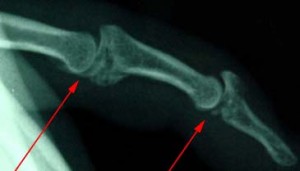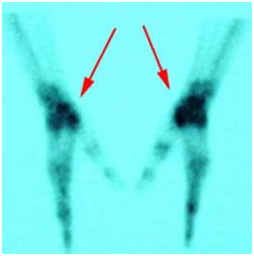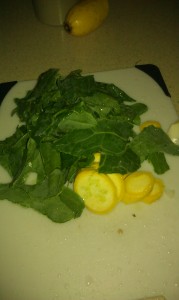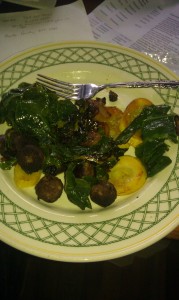Gentle Reader
Are you like me, suffering from chronic pain? Do you wake up every morning and check to see which joints are hurting? A friend of mine describes sitting on the edge of the bed wondering if she can actually stand and walk to the bathroom. I’m better off than that, but the first ½ hour each day is loud, you know the groaning and moaning. Too bad there’s no one around here but the cats to sympathize.
I when it was announced that Dr. Frank Painter would give a seminar on Chronic Pain management. This post contains careful notes from that seminar.
Dr. Painter is a major research and practicing chiropractor and maintains the research pages for the Chiro.org online resource for his profession. It gets thousands of hits a month and is the most go-to site for alternative health care regarding chiropractic treatment. You can look him up here.
He began with shocking statistics (sometimes I glaze over with too many statistics, but I know professionals quantify results so bear with me.) Chronic pain causes UNBELIEVABLE suffering, disrupts careers and lifestyle, and brings about unimaginable financial drains on our society. It’s now estimated that 24 percent of Americans (or approx. 48 million people) suffer from chronic pain. More than one-third of them regularly take pain medicine to manage their suffering. Those statistics are very frightening.
Pain is caused by tissue injury, surgical procedures, and a variety of illnesses. The common pain we experience from a cut or bruise is very well understood. It is referred to as acute pain, and is accompanied by the inflammatory response, which involves local swelling, increased temperature, redness, and loss of function.
Damage to cell membranes during an injury releases two substances that initiate the inflammatory response. They are called prostaglandins and bradykinins. These molecules cause nearby nerve cells to transmit pain information to the brain. Following the formation of a stable clot, fibroblasts migrate to the site of injury to repair the damaged tissues. That is when acute pain is normally extinguished. This explains how the acute pain and swelling when I hurt my wrist hiking gradually stopped hurting. The body rushed repair mechanisms to the place where it was most damaged and in a few hours the acute pain was gone; in a few days all pain was gone.
Chronic pain is different, because chronic pain persists.
Dr. Painter focuses on safe supplementation as an alternative to pain medication. He also talks about our diet and why chronic pain is so much more common today than in the past.
He reports on a recent study involving hundreds of patients who underwent surgery on their ankle or knee. The patients who took 1000 mg. of vitamin C for 46 days after their surgery reported 80% reduction in what is called complex regional pain, compared to patients who did not take vitamin C. If you are planning surgery, especially in a limb (knee or hip replacement for example) begin taking 1000 mg of Sustained Release Vita C before surgery and continue for at least 46 days to prophylactically avoid pain.
Can you believe that more than a 3rd of all people with pain take medication? When we suffer acute pain from surgery or an injury, the inflammatory response, loss of function, redness and damage to the membrane is alleviated by medication. And then you stop taking it. With chronic pain, the wound never heals. Chronic pain keeps on going. Any pain that lasts more than 6 months and has no end in sight, like arthritis, cancer is chronic.
A chiropractor once explained to me that injury sustained in a car wreck creates a pain path in the nervous and muscular system. The next fender bender is nowhere near as traumatic, but the pain is worse. This pain path is reactivated, familiar and more challenging to cure. Believe me, I had a series of car accidents each one less violent than the previous one. Funny how the pain increased with each one.
How does our diet contribute to chronic pain?
Because of radical changes in the American Diet since the 1950’s, our diet is now pro inflammatory and contributes to both chronic pain and autoimmune system diseases. I’ll remind you what these changes were: milling of wheat and other grain to make a ‘whiter’ end product, ie. refining our food; manufacturing foods with high amounts of hydrogenated oils.
Let’s see what’s going on here. In a plain food diet (no processing), the oils—omega 3 and omega 6 fatty acids are in equal balance. Dr Painter points out that there are 49 known essential nutrients—nutrients our body cannot make but must get from food. These two oils are among them. They work in concert in the body regulating thousands of functions through the prostaglandin pathways. I created a link here in case you, like me, are curious about these babies, prostaglandins, which I’ve been hearing about for all these years of studying nutrition’s effect on our body. Check it out. Fascinating.
Omega 3 (we eat salmon and buy fish oil for this one) helps the prostaglandins with inflammation, cardio health, allergies, immune response, mylin sheath protection, hormone modulation, and behavior. Omega 6, found in borage oil, evening primrose oil, initiates the chemical cascade in the inflammatory response to any injury or infection.
Here’s the problem with this duet. We used to eat a balance of the omegas 3 and 6, short and longer chain fatty acids: one to one. Now, with all these refined foods the balance has changed to twenty to one, omega 6 over omega 3. Think of the Omega 6 as the gas pedal on your car i.e. body, and omega 3 as the breaks. Omega 6 turns on the inflammatory response. Omega 3 (fish) turns it off.
The car is headed for the cliff, folks and the brake pedal is too weak to stop us from hurtling into a world of pain.
We need both Omega 3 and Omega 6. We need them in the correct ratio. Omega 6 comes from hydrogenated oils which are found in virtually all processed foods. Removal of the grain coatings (brown rice, wheat), increased sugar consumption (sugar interferes with synthesis of these fatty acids) and the increase in consumption of deep fried foods and margarine prevent with the healthy marriage of the two fatty acids. The 1:1 synthesis isn’t happening.
What’s the ratio in your life between corn, sunflower and sesame oils (which appear is most processed foods as hydrogenated oils) and cold water fish, sardines, salmon and anchovies? Too many Omega 6’s = chronic pain.
Impact of chronic pain
People hurt too much to get up and go to work. We lose $3 billion in income each year because of pain. Stuff doesn’t get done because we hurt too much to do it. $60 billion a year in lost productivity. Sixty million of us have arthritis, 1 in 3. Family members living with someone in chronic pain have to deal with the frustration, anxiety and misery of the suffering person. How disruptive to family life it is to have all this depression and a sense of helplessness caused by pain!
How do we manage this pain?
Standard medical management: pain meds, the most popular, aspirin, NSAIDS. We spend $2.6 billion a year on prescription NSAIDS and another $6 billion on over the counter pain meds. Most of us are unaware of the lethal side effects of these pain killers. Stanford University reviewed Inflammatory rheumatoid Arthritis (IRA) drug use in 15,000 patients. Projecting the findings from this well controlled study to the entire US population, they found that 107,000 rheumatoid Arthritis patients were hospitalized for complications from these drugs, a large number of whom never left the hospital alive. They bleed out before anyone can help them. 16,500 a year die this way. That’s only the IRA sufferers. What about everyone else who takes these meds?
You get no warning signs for the stomach trouble that results from taking these medications. You just bleed to death.
People with osteoarthritis and IRA are more likely than the regular population to be hospitalized because of GI bleeds. The risk of Non-steroidal anti-inflammatory drugs or NSAIDS is constant but increases over time with continued use. The longer you take these drugs, the higher the risk becomes. Drugs used to coat the stomach do not lower this probability. The only way to prevent this stomach damage is to stop taking the non steroidal pain medication. Dying from bleeding to death because of taking too many NSAIDS is the 15th cause of death in America.
By the way, when’s the last time you picked up a bottle of aspirin, ibuprofen or naproxen and stopped by to chat with your pharmacist about possible interactions with any other drugs you are taking? No? You are not alone. Of all the readers of Consumer Report magazine who answered their survey, only 38% who picked up these drugs when prescribed by their doctor talked to the pharmacist about dangers or interactions. Only 29% who bought the OTC versions checked with their pharmacist. We used to be more cautious, before usage became so common. Eight years ago, Consumer Report did the same survey and over 50% of the people purchasing these medications checked for side effects, dangers and interactions with other medications. Our pharmacists are trained in drug, supplement and food interactions (not our doctor) and should be used for their expertise. Avoid risk.
Two neurosurgeons at U of Pittsburg Medical Center decided to explore natural substances to use as a substitute for NSAIDS. They gave their IRA patients fish oil and after 75 days, 60% of the people had been able to completely discontinue their NSAID usage and were also able to drop off their other pain meds. 88% were extremely satisfied with their pain reduction from taking fish oil. They would continue to buy fish oil even though it costs more than the medication.
Natural relief
I am going to shamelessly talk about Shaklee’s pain management products. Dr. Painter is specific about Shaklee as the manufacturer in his presentation. This company’s large staff of medical scientists studied the problem of prostaglandins and pain, created biochemical models and searched until they found herbs and safe substances that would interrupt the pain path. I was blown away by the slide presentation Dr. Les Wong made at the annual conference the year Pain Relief Complex was introduced.
Pain Relief Complex. A compliment of medicinal herbs designed to treat pain. The primary ingredient Boswellia extract has been used in India for a long time for joint and arthritic pain as it contains very powerful analgesic properties. In a study people with severe osteoarthritis knee pain where able to get more flexibility and much less pain with Boswellia extract, and thereby increase their walking distance dramatically. The frequency of swelling in the knee joint decreased. Boswellia has also been used to heal the stomach from ulcerative colitis. In other words, it helps heal a stomach damaged by Celebrex or other NSAIDS.
Jt. Health Complex. When in pain we develop pain avoidance behaviors like limping. Other daily activities are avoided because you know its going to hurt too much to do it. I know I leave stuff lying on the floor and put off raking leaves because I know I’m going to hurt when I bend over too often.
When we stop moving to avoid pain, we actually increase the likelihood of increased pain. Why is that? Joint tissue—ligaments, bone, have no blood supply of their own. They eliminate their waste products through a pumping motion when the joint moves. Nutrition to the joint also depends on pumping, or moving. Waste products out, nutrition in, through motion. Without motion, waste products build up around the joint which inhibits the nutrition from being absorbed. Nutrients move from the high concentration in the blood to diffuse themselves into the joint. This process requires movement. If your joint is smothered in waste products, the nutrients don’t go there—too crowded—and the cells start to die because there are no nutrients to feed them. The cartilage begins to degrade and then the bones start to get closer and closer together. The body tries to stabilize that joint by importing minerals like calcium and magnesium to build extra protection around that joint. If you took an x-ray of the joint, you’d see little growths where they should not be. The objective is to reduce the pain so you get more motion in the joint and clear the waste and allow nutrients to enter. Joint Health Complex provides dramatic and speedy pain relief to get you moving again.
NSAIDS actually accelerate the deterioration of cartilage. 36% of liver failure is being cause by acetaminophen (Tylenol) toxicity. One out of three liver transplants is because of the use of acetaminophen. This research and the death of children from Tylenol drove the search for anti-inflammatories with no side effects.
Jt Health Complex leads the way. Boswellia seratta has a long use as an herbal anti-inflammatory. It works. It can be used to treat osteoarthritis, inflammatory bowel disease, RA and asthma. Boswellia was first introduced in Shaklee Pain Relief complex in 2003. It is so powerful they decided to add it to the Jt. Health Complex. Joint Health Complex includes as a major ingredient glucosamine. It has been shown in clinic studies that combining chondroitin with glucosamine reduced the body’s ability to absorb the glucosamine. In redesigning the Jt. Health Complex, Shaklee scientists made sure there was no chondroitin mixed in with it.
Testing
Once they had the new formulation completed, they tested it head to head with the leading pharmacist recommended product, Walgreen’s Osteobyflex. In a clinical trial they found that Jt. Health Complex was 28% faster acting than byflex for providing pain relief. If you were beginning for the first time to take the product, it took only 5 days to get relief with Jt. Health Complex as opposed to 7 days with Osteobyflex. With the addition of boswellia, Jt. Health complex gave 45% better pain relief than the Walgreen product. Shaklee found a vegetarian source for glucosamine. Most glucosamine on the market is sourced from shell-fish. They also made use of a carrier molecule that does not have salt (some products on the market are as much as 30% salt!) which, if you had high blood pressure could be bad—1 third of a tablespoon of salt? I don’t think so. Jt. Health Complex uses hydrochloric acid instead of sulfate to deliver glucosamine. It also contains zinc, manganese, copper and Vita C to nourish the developing cartilage. Glucosamine has been researched extensively since 1970’s and has been found to be at least as effective in relieving pain and NSAIDs without any dangerous side effects. In one study it was shown that there was an actual increase in the cartilage with glucosamine.
Joint and muscle pain cream. Helps with pain from over use during exercise. Active ingredient is menthol. Shaklee improved on the healing characteristics by improving on the delivery of the menthol with a liposome delivery system. This liposome delivery provides prolonged release and deeper penetration. If you’ve used Flexall 454, Icy Hot and JointFlex, your may get temporary distraction from pain, but you are probably throwing your money away. Topical local anesthetics, topical capsaicin are basically aspirin in creamy form and could affect your stomach the way taking aspirin does.
I strongly recommend this trio of pain relief products for chronic pain. I use them to great advantage. Dr. Painter provides the scientific back drop to prove the effect is no placebo.
If you suffer from chronic pain that does not seem to associated with a joint, Omega guard is the #1 nutrient solution. Shaklee’s OmegaGuard, DHA, EPA and 5 other naturally found omega 3 fatty acids provides the missing link for halting diet induced inflammation. Get the balance back between omega 6 and omega 3, supplement with Omerga 3 so the ratio is 1:1 and you will have less pain. OmegaGuard naturally balances the prostyglandins that prolong the inflammatory response to pain stimulus. Rather than using drugs to suppress the inflammation, re-balance the body’s own ability to handle pain by changing your diet to eliminate hydrogenated fats and excess sugars plus taking enough OmegaGuard to change the Omega3:Omega6 dance back to 1:1.
That’s it. Thanks for reading all the way to the end. May you be well, pain free and able to keep moving.
What’s next?
Tell us
Do you check your meds and OTC drugs with the pharmacist?
What pain relief rubs have your tried? Results?
Have you given up hope or are you willing to try another way to get relief?
If you decide you want to try these products, go to my blog page, http://www.grandmabetsybell.com/shop-shaklee-products/ and browse the product guide.
Get in touch via the comment section.
If you have found value here, feel free to share on your FB page or with your friends and colleagues suffering from chronic pain.
Fondly, Betsy
Be Well, Do Well and Keep Moving
BetsyBell’s Health4u
206 933 1889 1 888 283 2077
betsy@hihohealth.com







